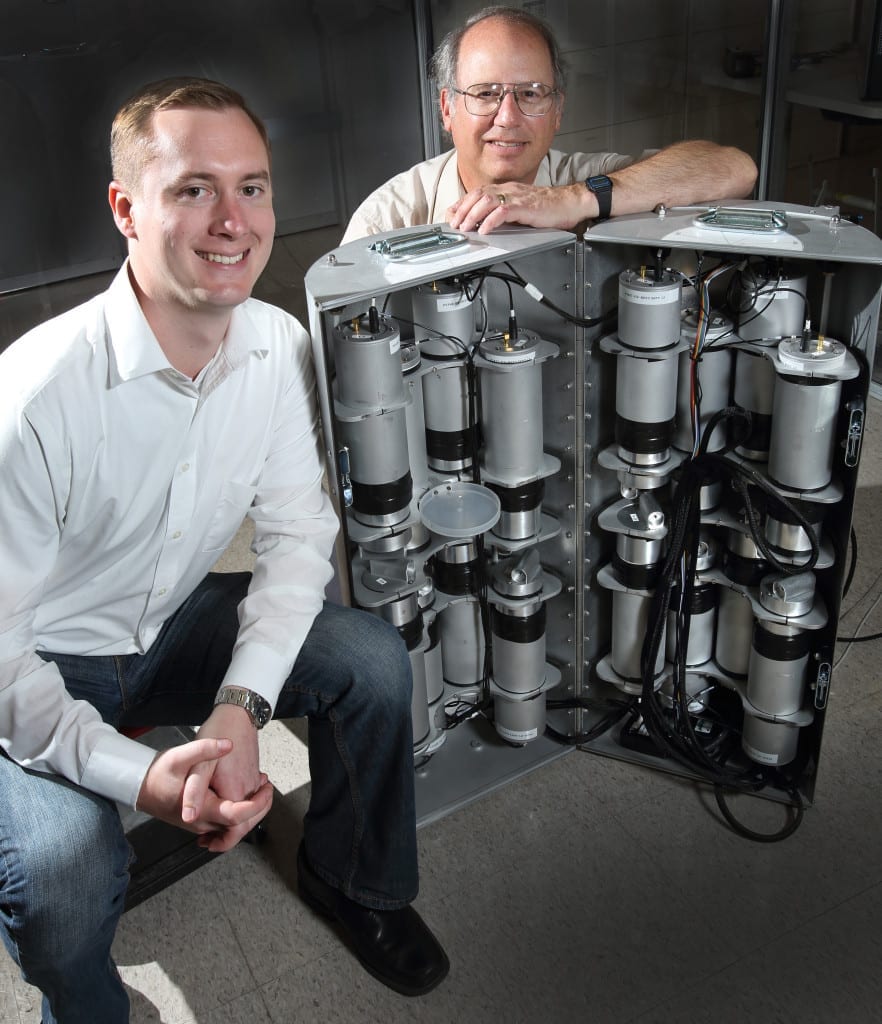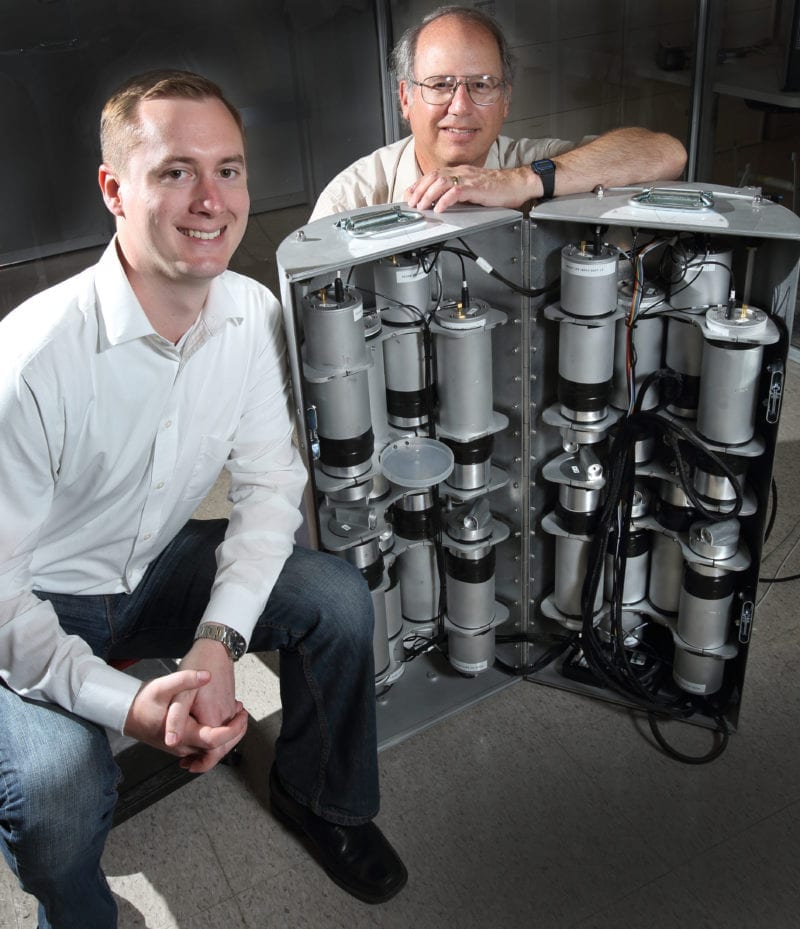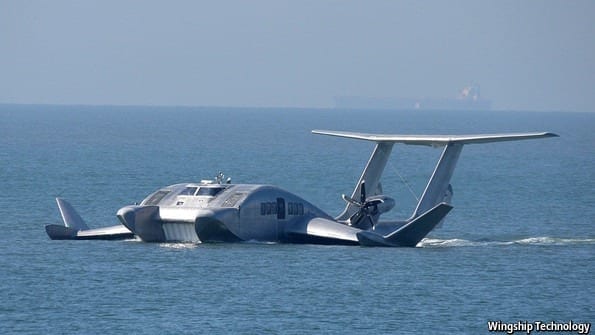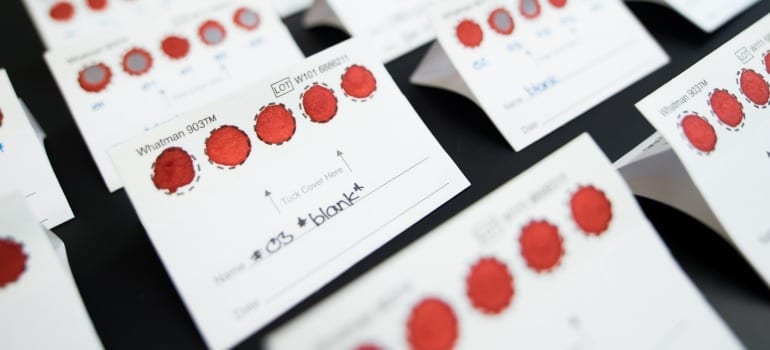
Mobile imager of fast neutrons spots radiation source at a distance and through shielding
nuclear device has been hidden in a high-rise building in a major metropolitan area. Emergency responders have intelligence that narrows down the location to a single city block, but it isn’t safe to search door-to-door. Can they identify the exact location of the device quickly without the culprits realizing a search is on?
The answer is a definite yes. Sandia National Laboratories’ mobile imager of neutrons for emergency responders (MINER) system did just that at an emergency response exercise in downtown Chicago earlier this year. The exercise used a sealed laboratory radiation source that mimics the radioactive signature of more nefarious material.
“The system performed exactly as we expected,” said Sandia physicist John Goldsmith. “With an unshielded source, we pinpointed the location within 30 minutes. With more shielding, it took a couple of hours.”
MINER is a portable version of the neutron scatter camera, which detects fast neutrons that emanate from special nuclear material to pinpoint the source, even at significant distances and through shielding. Funding for the development came from the Defense Nuclear Nonproliferation Office of Research and Development within the Department of Energy’s National Nuclear Security Administration.
The original neutron scatter camera was quite large, standing about 5 feet tall and requiring a power source. MINER is about half that size at 3 feet tall and 90 pounds.
MINER consists of 16 proton-rich liquid scintillator cells arranged inside a large cylinder. The scatter aspect comes into play as neutrons travel through the scintillator cells and bounce off protons like billiard balls. Those interactions among the different detector cells enable the instrument to determine the direction of the radioactive source that emitted the neutrons.
Distinguishes between threatening and non-threatening radiation sources
As a neutron scatter camera, MINER has several advantages over other types of detectors, including the ability to discriminate the device signature from background radiation and to measure the spectrum of neutrons emitted by it.
“Simple neutron counters are unable to distinguish a threat source from an elevated neutron background. However, an imager such as MINER can do this by observing a ‘hot spot’ against the neutron background,” Goldsmith said. “In addition, MINER’s ability to measure the neutron spectrum enables it to distinguish plutonium, a threat source, from AmBe [americium-beryllium, the most common commercial source of neutrons], which is not a threat source. Among imaging approaches, this capability is unique to MINER.”
MINER can be set up and taken down in 10 minutes, and most importantly, operates on battery power. “Since MINER doesn’t need to be tethered to a power source, it gives a lot of options to emergency responders,” said Goldsmith.
The Chicago field exercise focused on neutron detectors, so MINER was one of three neutron imagers tested along with several neutron counters. It wasn’t a competition, explained Goldsmith, but a test of each detector’s capabilities.
“There are tradeoffs with every kind of detector. If you are trying to pinpoint a source, a backpack detector might be the fastest, but there are scenarios in which walking around isn’t possible,” he said.
One of MINER’s strengths is its ability to provide omni-directional imaging. “Other imaging detectors have a very fixed field of view, so they look at a specific spot,” said Sandia physicist Mark Gerling. “MINER images all the way around and up and down, or a full 4? steradians. We imaged part of one side of an entire high-rise building at once and narrowed the search to a specific room. It’s extremely effective in this situation.”
The Latest on: Portable nuclear device detector
[google_news title=”” keyword=”portable nuclear device detector” num_posts=”10″ blurb_length=”0″ show_thumb=”left”]
via Google News
The Latest on: Portable nuclear device detector
- Nanalysis Announces Fourth Quarter and Full Year 2023 Resultson April 29, 2024 at 1:04 pm
Nanalysis Scientific Corp. ("the Company") (TSXV: NSCI) (OTCQX: NSCIF) (FRA: 1N1), a leader in portable NMR machines and MRI technology for industrial and research applications announces fourth ...
- Q&A: Cosmic rays, space weather and larger questions about the universeon April 22, 2024 at 1:37 pm
With the naked eye, you can't see the weather in space, or feel the cosmic rays beaming down to Earth—but they can impact critical systems like our climate, computer connectivity, communications and ...
- Veterinary Imaging Market to Hit USD 4.1 Billion by 2032, Fueled by Advanced Diagnostics | Marketresearch.bizon April 19, 2024 at 12:45 am
Marketresearch.biz reports that the Veterinary Imaging Market size is expected to be worth around USD 4.1 Bn by 2032 from USD 2.3 Bn in 2022, growing at a CAGR of 6.1% during the forecast period from ...
- 10 sci-fi concepts that are possible (in theory)on March 23, 2024 at 5:00 pm
It's also possible that, if wormholes already exist in the universe, they could be located using the new generation of gravitational-wave detectors ... Heck, humans already harness nuclear power in ...
via Bing News











